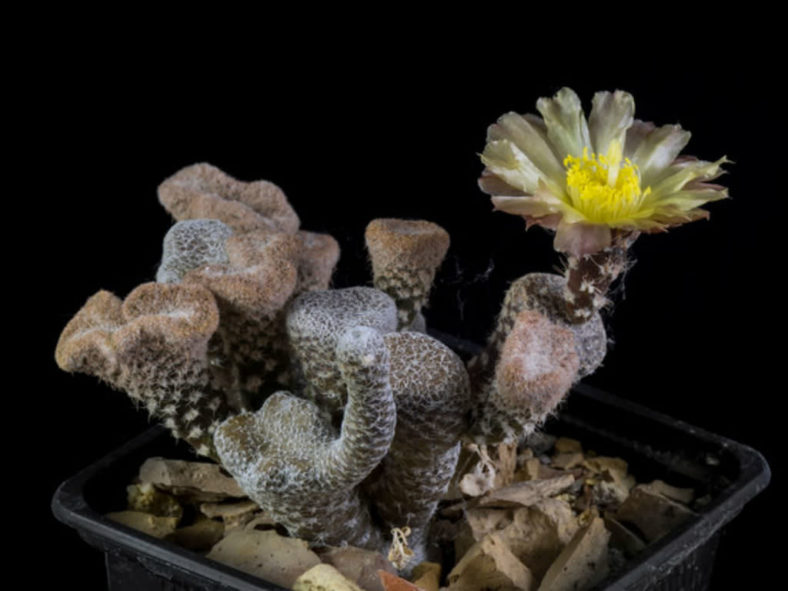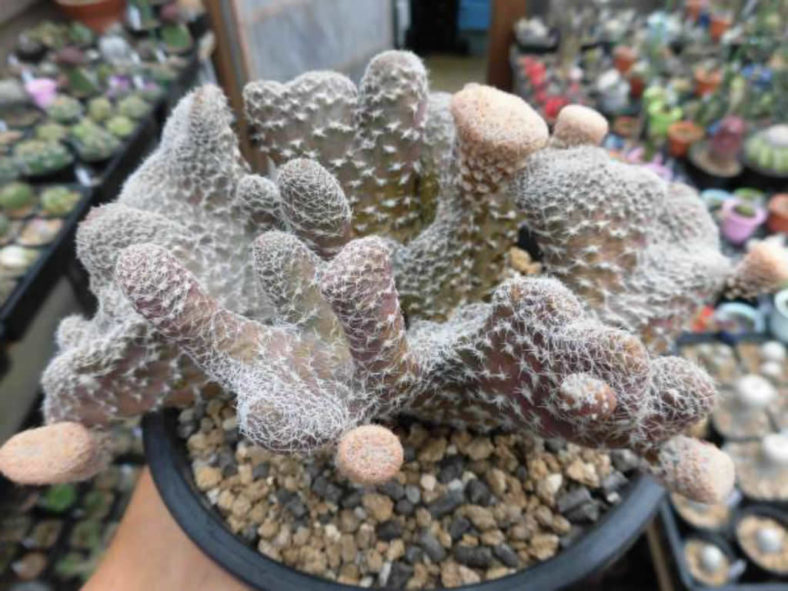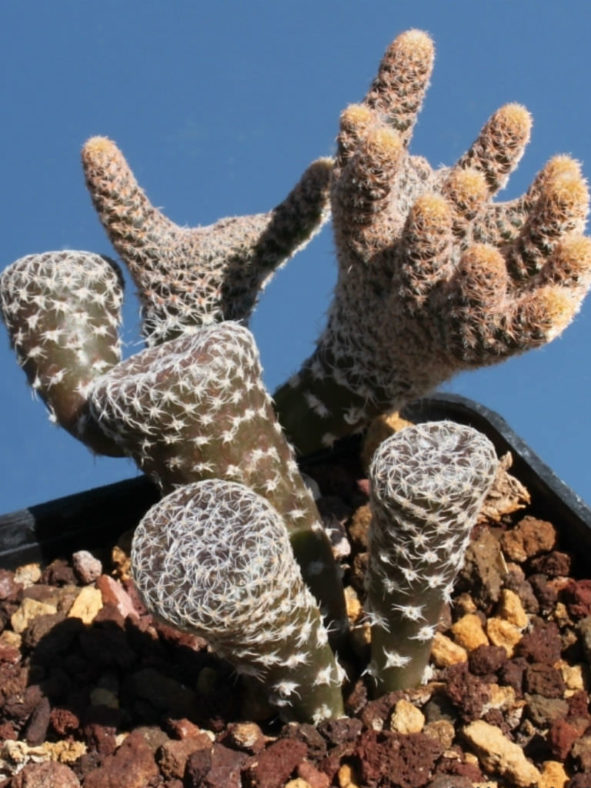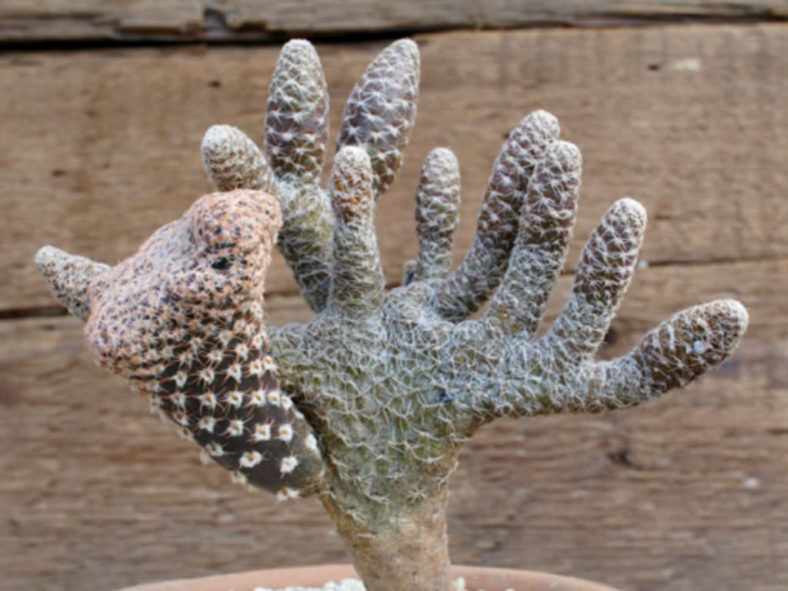Scientific Name
Maihueniopsis clavarioides f. cristata
Accepted Scientific Name
Maihueniopsis clavarioides (Pfeiff.) E.F. Anderson
Common Name(s)
Crested Dead Man's Fingers, Crested Mushroom Opuntia
Synonym(s)
Opuntia clavarioides f. cristata, Puna clavarioides f. cristata
Scientific Classification
Family: Cactaceae
Subfamily: Opuntioideae
Tribe: Tephrocacteae
Genus: Maihueniopsis
Description
Maihueniopsis clavarioides f. cristata is an interesting cactus that can grow up to 6 inches (15 cm) tall, displaying its sculptural form. The typical form of Maihueniopsis clavarioides has distinctive conical segments, while the mutant forms can have fan-shaped or branching finger-like stems, which are also frequently found in cultivation. Sometimes, all three forms can be seen on a single plant.

Hardiness
USDA hardiness zones 9b to 11b: from 25 °F (−3.9 °C) to 50 °F (+10 °C).
How to Grow and Care
The large variety of species within the Opuntia genus means different types of Prickly Pears may need slightly different care. All are desert cacti that need lots of sun, light, and very little water. If you live in a hot, arid area, these plants can generally be planted outside, left alone, and enjoyed.
These cacti will grow just fine in a garden but can also be grown in pots. To repot, ensure the soil is dry, remove the pot, and knock away the old soil. After treating any cuts with fungicide, place the cactus in a new pot and backfill it with potting soil. As with a new cutting, ensure not to water a newly repotting Prickly Pear briefly to avoid rotting its roots.
Opuntia can propagate either by cuttings or by seed. To propagate by cuttings, sever pads from a plant and let them dry to heal the wounds. Then, place the plants in dry soil and refrain from watering them until they begin to grow to avoid rotting them.
See more at How to Grow and Care for Opuntia.
Origin
Maihueniopsis clavarioides f. cristata is a crested form of Maihueniopsis clavarioides.
Links
- Back to genus Maihueniopsis
- Succupedia: Browse succulents by Scientific Name, Common Name, Genus, Family, USDA Hardiness Zone, Origin, or cacti by Genus
Photo Gallery
Click on a photo to see a larger version.



